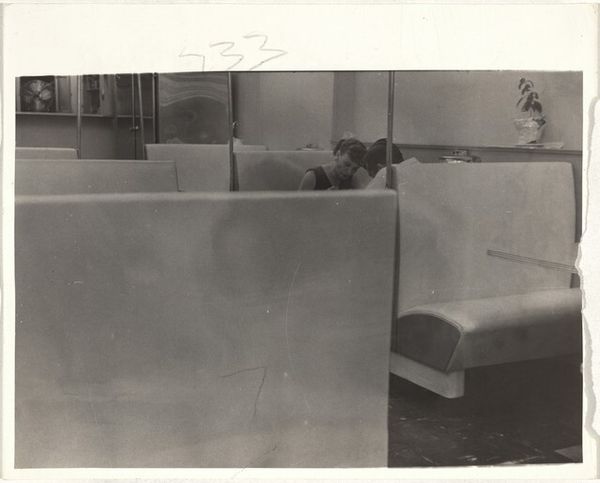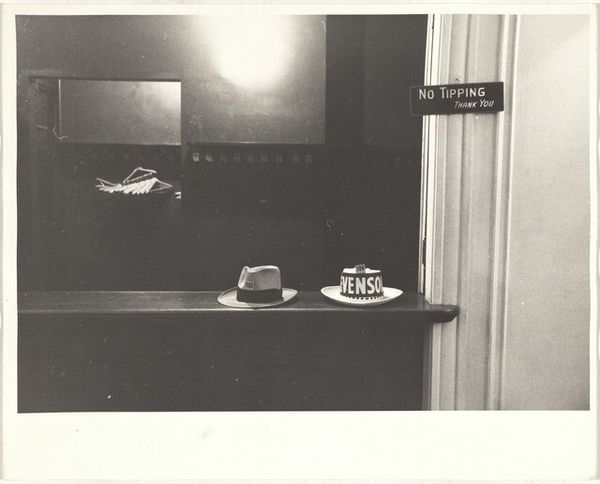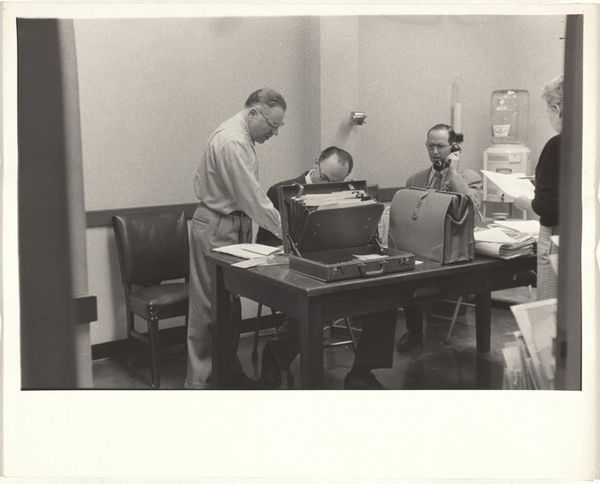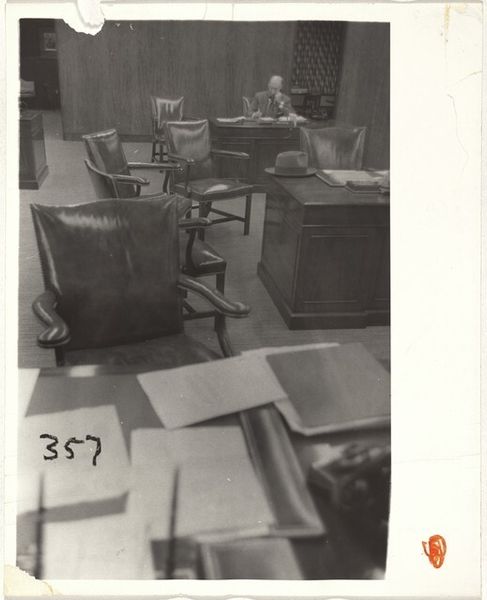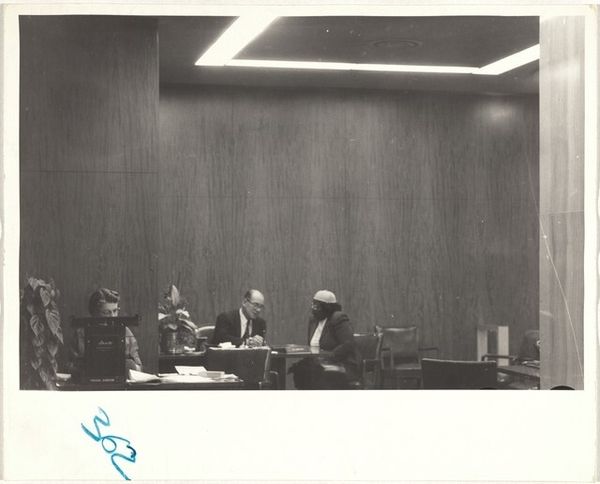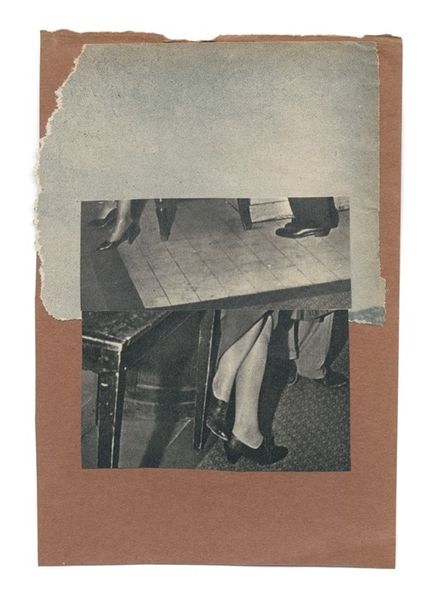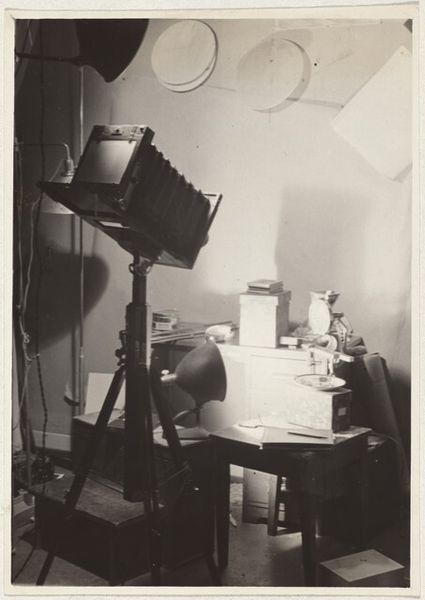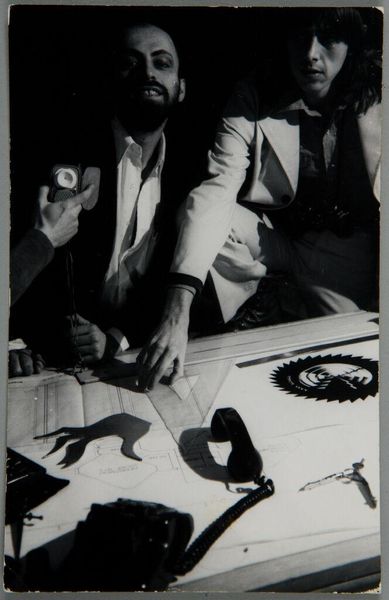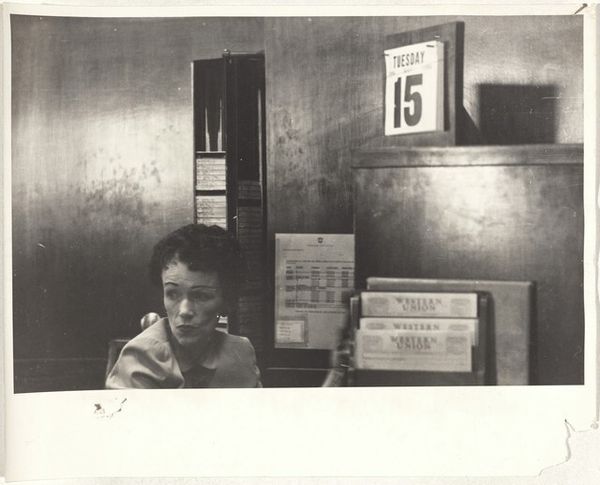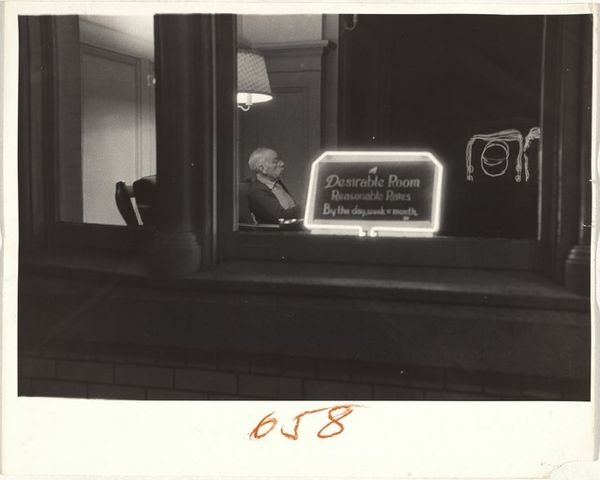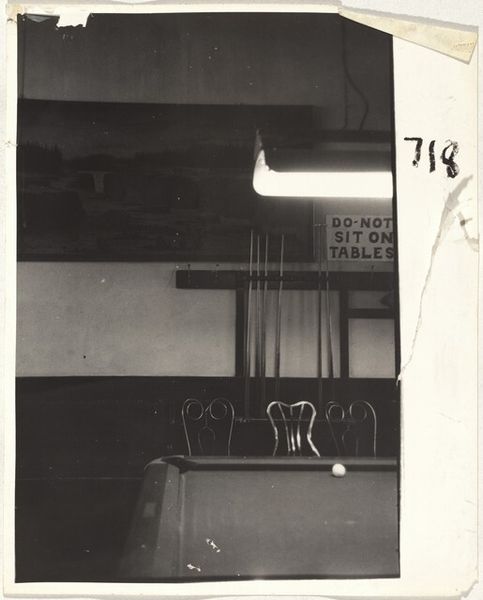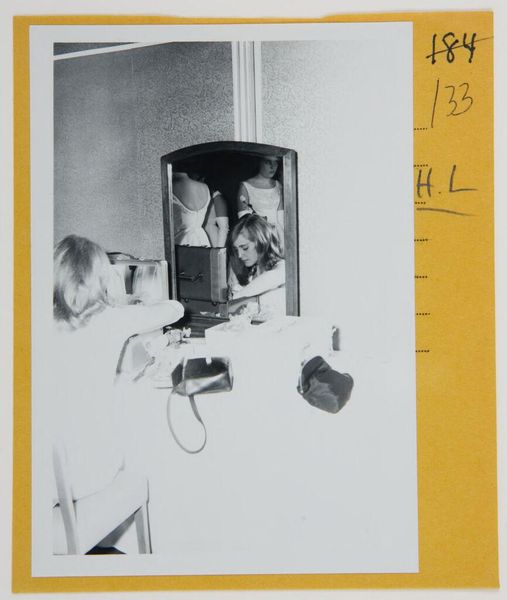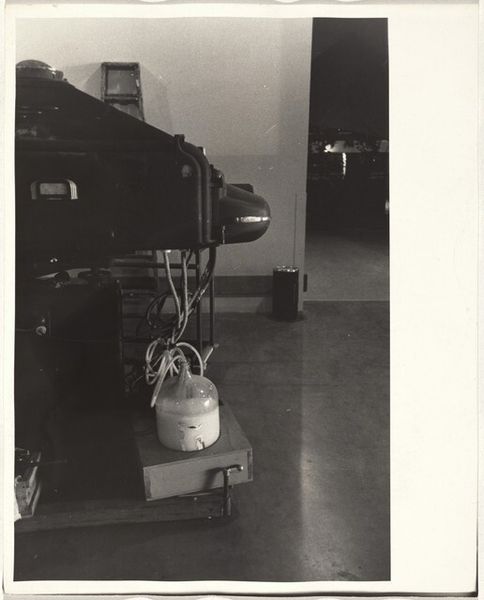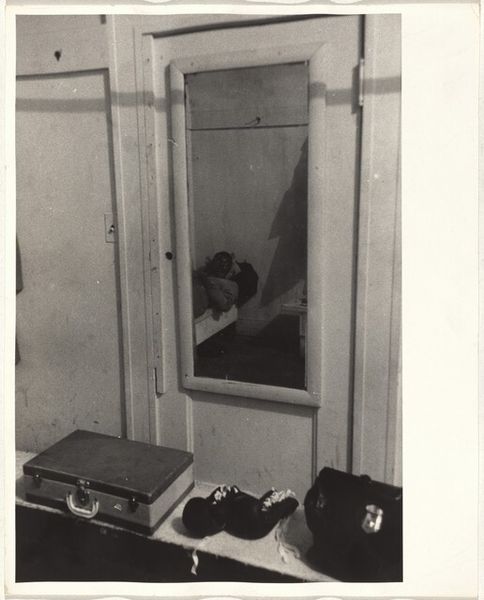
Man reading newspaper, NBC TV studio--Burbank, California c. 1955 - 1956
0:00
0:00
#
print photography
#
photo of handprinted image
#
wedding photograph
#
photo restoration
#
photo element
# print
#
wedding photography
#
archive photography
#
couple photography
#
wedding around the world
#
celebration photography
Dimensions: sheet: 20.3 x 25.2 cm (8 x 9 15/16 in.)
Copyright: National Gallery of Art: CC0 1.0
Curator: Today, we’re looking at Robert Frank’s photograph, “Man reading newspaper, NBC TV studio—Burbank, California,” circa 1955-1956. It’s a black and white print capturing a moment of apparent leisure in a working environment. Editor: There’s an immediate sense of boredom or perhaps ironic detachment that strikes me. The pose—feet up on the desk—conveys a casual disregard juxtaposed against the sterile, institutional setting. Curator: Precisely. Consider the formal composition: the desk acts as a stark horizontal divider, segmenting the space. The strong diagonal of light against the blank wall enhances this division, creating a powerful contrast. Editor: Yes, and if we delve into the material aspect, think about the desk itself—its function, the objects it holds: the newspaper, a telephone, an open briefcase. These are all tools associated with labor and communication, yet they're arranged in a scene of near-idleness. What's the story behind this individual, what were their tasks? Curator: Semiotically, each element is loaded with significance. The newspaper suggests an engagement with current events, yet its positioning also hints at escapism. The briefcase, usually a symbol of professional ambition, is left open, seemingly forgotten. Editor: Let's not forget the printing process. The tonality achieved in hand-printed images in photography brings a sense of human imperfection. It gives more personality, contrasting again with the perceived sterility. The image, I feel, hints at broader social observations regarding work, leisure, and the individual within a large organization. Curator: Certainly. The absence of a clearly visible subject forces us to focus on these surrounding elements, transforming the photograph into an exploration of spatial relationships and implied narrative. The print becomes a tableau of modern alienation. Editor: Indeed. I’m struck by how the photo makes me consider our changing relationship with work then and now. Robert Frank is really prompting me to consider the labor context of these decades, and how people interact with their everyday material environment. Curator: It encourages a closer inspection, doesn’t it? Hopefully, it provides you with insights into the way that social narratives are created through the arrangement of forms and light in space.
Comments
No comments
Be the first to comment and join the conversation on the ultimate creative platform.
